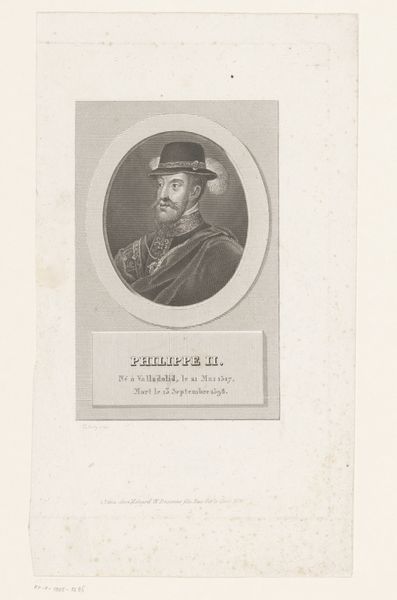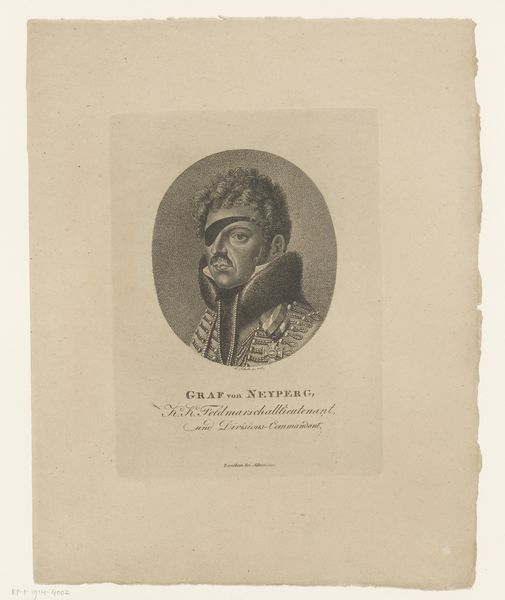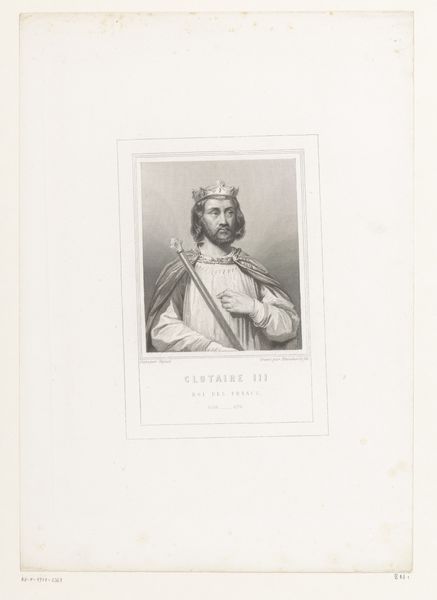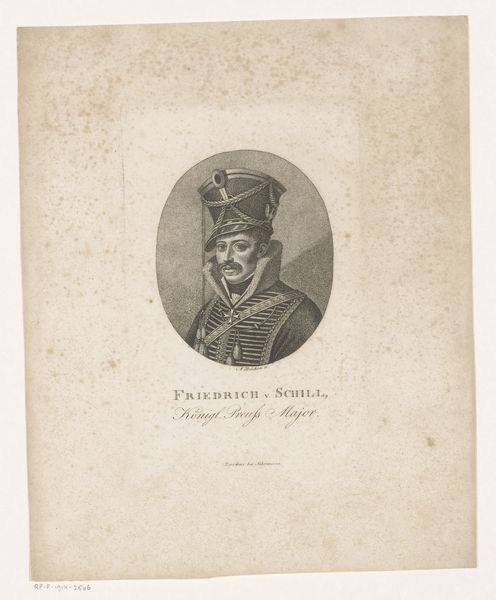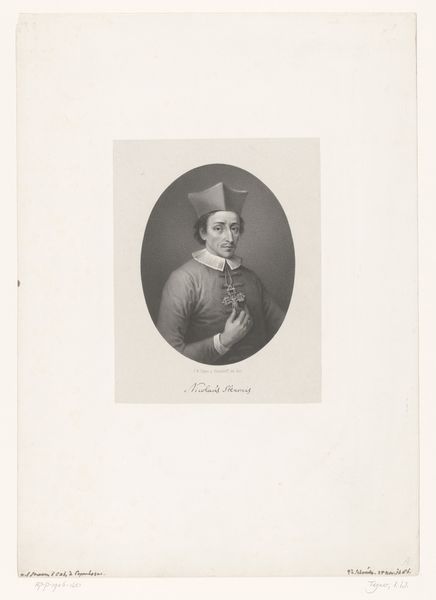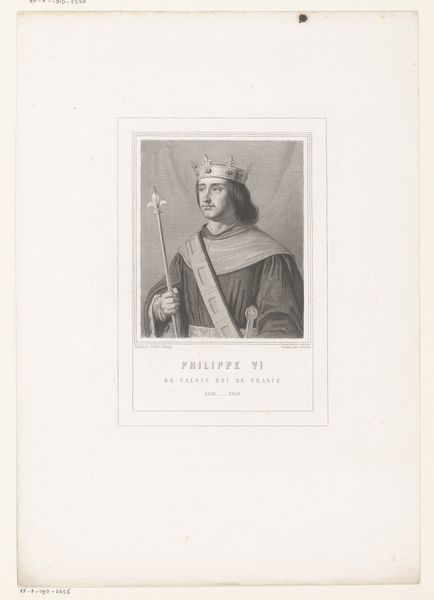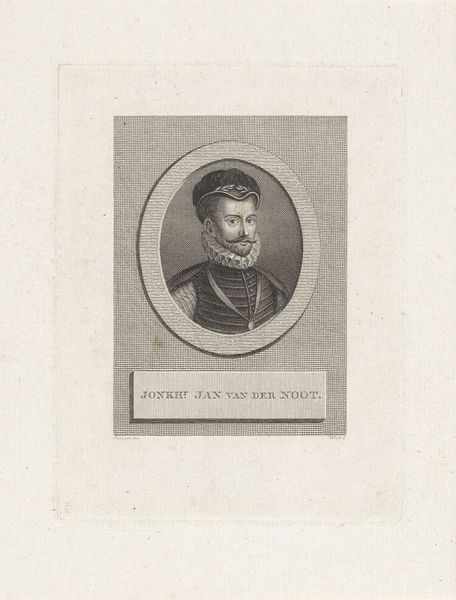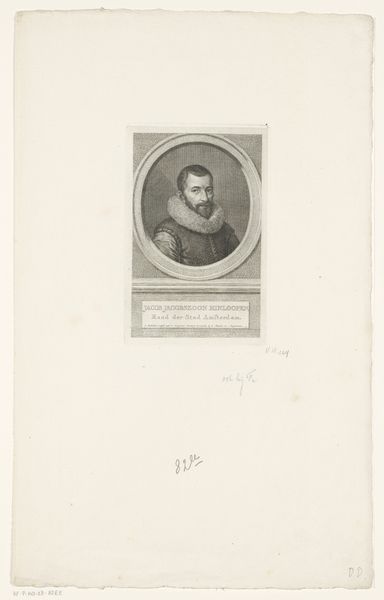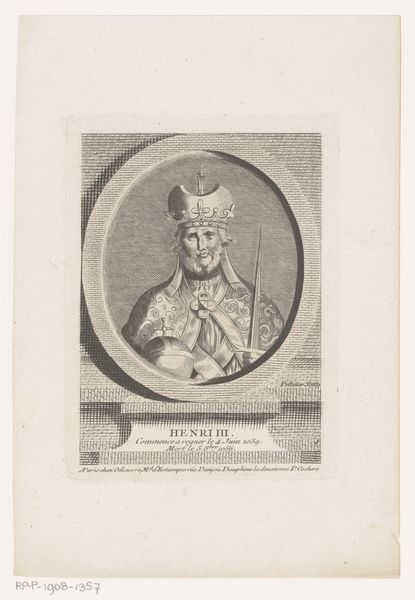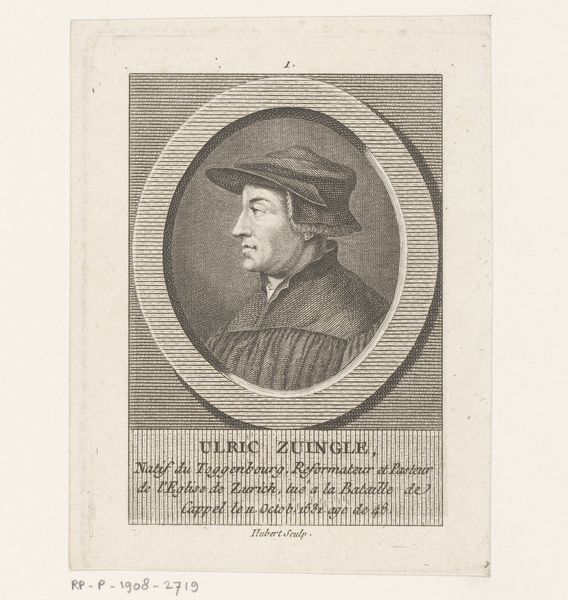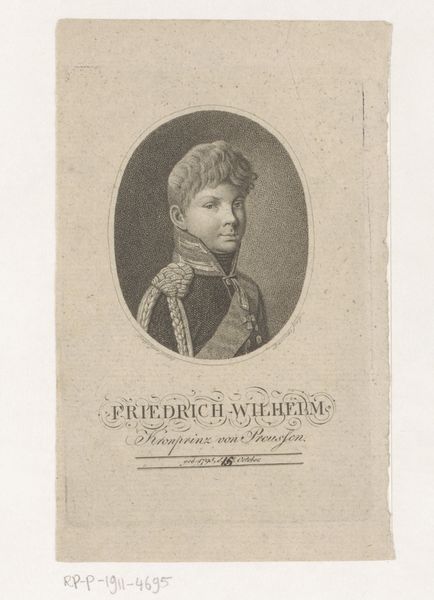
print, engraving
#
portrait
#
neoclacissism
# print
#
old engraving style
#
history-painting
#
engraving
Dimensions: height 257 mm, width 176 mm
Copyright: Rijks Museum: Open Domain
Editor: Here we have an engraving from 1824 by Alexandre Massard titled "Portret van Frans I van Valois-Angoulême," or Portrait of Francis I of Valois-Angoulême. The precision in the lines is quite striking, almost photographic in its detail despite being a print. What strikes you most about this piece? Curator: Looking at this portrait, I am drawn to the process of its creation and what it reveals about material conditions and labor. As an engraving, it inherently involves a series of steps - the original artwork that this portrait is copied from, the work of the engraver creating the plate, the labor involved in printing copies. It invites questions about accessibility and value of images in 19th century, especially royal portraiture. How does this portrait function within a market of imagery? Editor: So you’re saying its value lies as much in its reproducibility and availability as in its artistic merit? Curator: Precisely. What was the artist attempting to capture about the original painting by replicating it via this medium? Consider the choice of engraving itself, a technique lending itself to precision and distribution. Was Massard consciously elevating or popularizing an image? How many other portraits were made using the engraving technique and sold around Europe at the time? Editor: That’s a fascinating way to consider it. I had been focused solely on the aesthetic representation of the King himself! Now, I'm seeing it as part of a wider network of image production and consumption. I see it makes me consider class and consumption rather than simply artistic mastery. Curator: Exactly! By shifting our gaze from the singular image to the context of its making, we begin to uncover the social and economic forces at play in its creation.
Comments
No comments
Be the first to comment and join the conversation on the ultimate creative platform.
